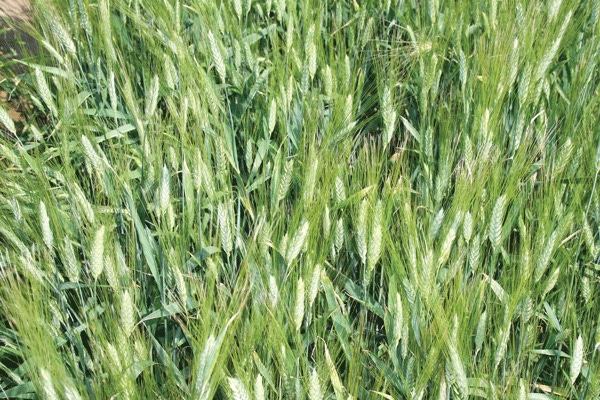May 18, 2011

Overnight temperatures dropped below freezing in parts of western and northern Kansas on the mornings of May 15/16. In low areas of the fields, temperatures will typically be lower than the officially recorded temperatures, and this will be where freeze damage will be most likely, said Jim Shroyer, K-State Research and Extension crop production specialist.
Whether actual freeze injury takes place depends on the low temperature reached, how long the temperatures stayed that cold, temperatures gradients in the field, wind speed, soil moisture, canopy density and other microclimate factors, he said.
Shroyer explains the potential for freeze injury by stage of growth:
Boot: In the boot stage, wheat can be injured if temperatures drop down into the mid to upper 20s for several hours. Injury is more likely if this occurs repeatedly and if it is windy at night. To detect injury, producers should wait several days then split open some stems and look at the developing head. If the head is green or light greenish in color and seems firm, it is most likely going to be fine. If the head is yellowish and mushy, that’s a sign of freeze injury.
Awns beginning to appear: If the awns have begun to appear, there can be significant injury to the heads if temperatures reach about 30 degrees or lower for several hours. Tillers may finish shooting up the head, but few, if any, spikelets may pollinate normally and fill grain. Damaged heads from a freeze at this stage of growth may seem green and firm at first glance, but the floral parts will be yellowish and mushy.
Heading. Wheat is particularly vulnerable to damage from freezing weather as the head starts to emerge through the flowering stage. Temperatures of 30 degrees or lower can damage anthers if they are exposed.
If the wheat was in the flowering stage at the time of the freeze in the early morning hours of May 16, you can determine if the anthers are damaged by examining them with a magnifying lens, the K-State agronomist said. “Healthy anthers will be lime green. If they are damaged by a freeze, they will begin twisting within 2 to 3 days. Shortly afterward, they will begin to turn whitish or brown. The stigma in the florets also may or may not be damaged by a freeze. If the anthers are damaged by freeze, the flowers may fail to develop a kernel,” Shroyer explained.
If you are unsure whether there has been freeze damage to the anthers, wait several days and determine whether kernels are developing normally, he added. A week after flowering, kernels should be well-formed up and down the head under normal conditions.
If flowering has already occurred and kernels were forming at the time of the freeze, there still could be damage, Shroyer added. Generally, it takes colder temperatures (about 28 degrees) to cause damage to kernel development than to floral structures, he said.
“Healthy, developing kernels are greenish-white shortly after flowering. As they grow, they turn more greenish. But if they are damaged, they will turn grayish-white, shriveled and rough and will not continue to enlarge,” he said.
For more information on freeze damage to wheat, see “Spring Freeze Injury to Kansas Wheat,” K-State Research and Extension publication C646, at: http://www.oznet.ksu.edu/library/crpsl2/c646.pdf.
You May Also Like




